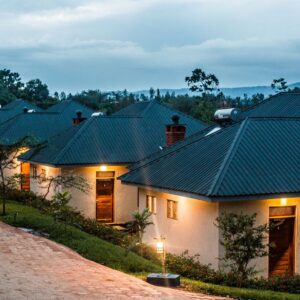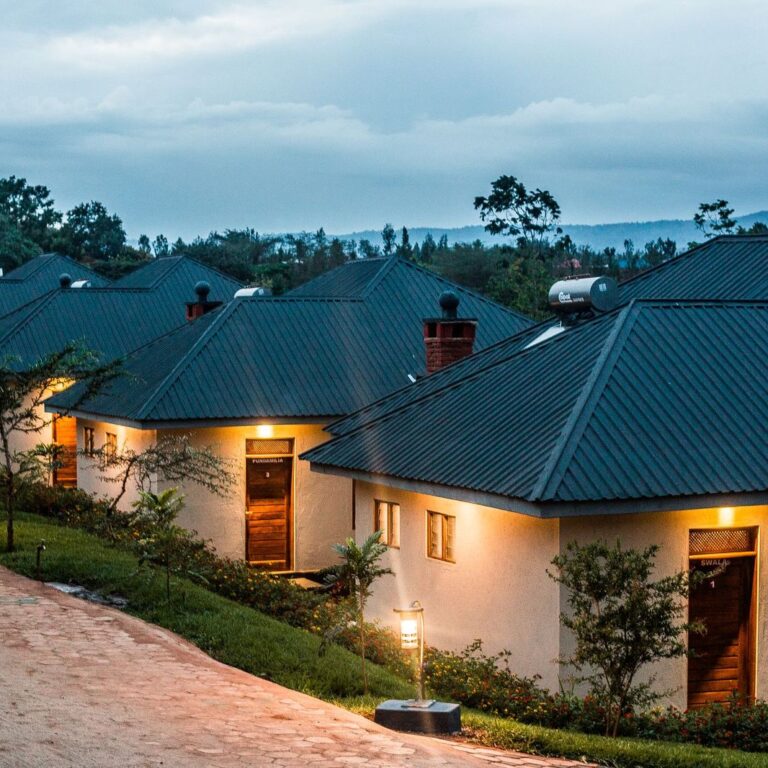When the conversation turns to the ultimate African safari, one name consistently rises above the rest: Serengeti National Park. This vast, iconic wilderness in northern Tanzania is not merely a destination; it is a living legend, a dynamic ecosystem that embodies the very essence of untamed Africa. Repeatedly voted as Africa’s leading safari park. The Serengeti offers an unparalleled wildlife spectacle, breathtaking landscapes, and an immersive experience that leaves an indelible mark on every visitor.
Serengeti National Park in Tanzania has been voted the best safari park in Africa. Marking the fifth consecutive year it has received this recognition. The park received an overall rating of 4.85 out of 5, based on 2,384 reviews, including both tourist reviews and expert opinions. The Serengeti is renowned for its vast landscapes, abundant wildlife, and the Great Migration. Where millions of wildebeest and zebra traverse the plains. But what truly sets the Serengeti apart from its equally stunning counterparts across the continent? It’s a confluence of extraordinary natural phenomena, robust biodiversity, and a commitment to preserving an ancient rhythm of life. Let’s delve into the compelling reasons why the Serengeti reigns supreme as Africa’s best safari park.
1. Unmatched Wildlife Viewing Opportunities
The sheer abundance and diversity of wildlife in the Serengeti are simply staggering. It’s a place where you don’t just hope to see animals; you expect to see them in vast numbers. The open plains provide excellent visibility. Allowing for expansive views of herds stretching to the horizon and predators moving stealthily through the grass. From the smallest dik-dik to the largest elephant, the park teems with life. Offering constant opportunities for incredible sightings and photographic moments.
2. A Sanctuary for the Big Five
For many safari enthusiasts, spotting the Big Five (lion, leopard, elephant, African buffalo, and black rhinoceros) is the ultimate goal. The Serengeti is an exceptional place to achieve this. Its healthy populations of these iconic species make encounters common and often spectacular. Lions are abundant, elephants roam in large herds, and buffalo are ubiquitous. While leopards and black rhinos are more elusive. The park’s expert guides and vast, diverse habitats significantly increase your chances of completing the Big Five checklist.
3. Diverse Ecosystems and Dramatic Landscapes
The Serengeti is far more than just “endless plains.” Its vast expanse encompasses a remarkable array of diverse ecosystems. Each supports unique flora and fauna and contributes to the park’s dramatic beauty. Vast Grasslands. The iconic plains, particularly in the south and central regions, are the heart of the grazing herds. Riverine Forests. Lush green corridors along rivers like the Grumeti and Mara provide vital water, shade, and habitat for hippos, crocodiles, and various primates.
Acacia Woodlands. Dotted with classic flat-topped acacia trees, offering cover for predators and browsers. Kopjes. Ancient, weathered granite outcrops that rise dramatically from the plains. Acting as vital vantage points and micro-ecosystems for various species, including lions and leopards. This mosaic of habitats ensures a constantly changing and visually stunning safari experience.
4. The Great Migration: Nature’s Greatest Show
The Great Wildebeest Migration is the undisputed crown jewel of the Serengeti, a phenomenon of unparalleled scale and power that sets it apart from almost any other park on Earth. This continuous, cyclical journey of over two million wildebeest, zebras, and gazelles, driven by the search for fresh grazing and water, defines the park’s rhythm.
Witnessing any phase of the migration is awe-inspiring. The intense wildebeest calving in the Southern Serengeti (late January to February). Where hundreds of thousands of calves are born within weeks, the dramatic river crossings (especially the Mara River from July to October). Herds brave crocodile-infested waters, or simply the sheer spectacle of endless columns of animals stretching to the horizon. It’s a raw, emotional, and unforgettable display of survival.
5. Rich Cultural Heritage of the Maasai People
The very name “Serengeti” is derived from the Maasai word “Siringet,” meaning “the place where the land runs on forever.” The semi-nomadic Maasai people have historically coexisted with the wildlife in parts of the broader Serengeti ecosystem for centuries. While they no longer reside within the national park’s boundaries, their vibrant culture, distinctive attire, and deep reverence for nature are an integral part of the region’s heritage. Many safari itineraries offer respectful cultural visits to Maasai villages on the park’s fringes, providing a rich cultural immersion.
6. World-Class Safari Accommodations
The Serengeti offers a spectrum of world-class safari accommodations that cater to every preference and budget, from rustic-chic tented camps to ultra-luxurious lodges. These establishments are meticulously designed to blend seamlessly with the environment while providing exceptional comfort and service. Many are strategically located to offer prime wildlife viewing directly from your tent or lodge. Ensuring an immersive experience around the clock. The mobile camps, which move with the Great Migration, offer an unparalleled opportunity to stay right in the heart of the action.
7. Commitment to Conservation and Sustainability
The Serengeti National Park is a beacon of conservation and sustainability. As a UNESCO World Heritage Site, it benefits from robust protection efforts managed by the Tanzania National Parks Authority (TANAPA). These initiatives include rigorous anti-poaching patrols, habitat preservation, scientific research, and community engagement programs. The revenue generated from tourism directly contributes to these vital conservation efforts. Ensuring the long-term survival of its unique ecosystem and its iconic wildlife for future generations.
8. Easy Access and Exceptional Guided Experiences
Despite its wild nature, the Serengeti is surprisingly accessible. Travelers typically fly into Kilimanjaro International Airport (JRO) and then take short domestic flights to one of the park’s numerous airstrips. Once there, exceptional guided experiences await. The safari guides in the Serengeti are renowned for their expertise, tracking skills, and in-depth knowledge of wildlife behavior, making every game drive an educational and thrilling adventure. Their dedication ensures optimal sightings and a safe, enriching journey.
9. High Density of Predators Makes it Relatively Easy to Witness Kills
The abundant prey base, particularly during the Great Migration, supports an incredibly high density of predators in the Serengeti. This means that witnessing the dramatic interactions between predator and prey, including actual kills, is relatively common. Whether it’s a lion pride ambushing wildebeest, a cheetah chasing a gazelle, or hyenas scavenging. These raw, powerful moments are a stark reminder of the circle of life in the wild and are a major draw for wildlife photographers and enthusiasts.
10. Excellent Birding
Beyond the magnificent mammals, the Serengeti is a birder’s paradise, boasting over 500 species of birds. From the colossal Ostrich to the elegant Secretary Bird, the vibrant Lilac-breasted Roller, and numerous raptors, the avian diversity is astounding. The varied habitats within the park support different bird communities. Offering endless opportunities for birdwatching enthusiasts to spot both resident and migratory species. Adding another rich layer to the safari experience.
11. Seamless Integration with Tanzania’s Northern Circuit
One of the significant advantages of choosing the Serengeti is its seamless integration with other top-class parks of Tanzania’s Northern Circuit. A visit to the Serengeti can be easily combined with: Ngorongoro Conservation Area. For guaranteed Big Five sightings within the dramatic crater. Tarangire National Park. Known for its massive elephant herds and baobab trees. Lake Manyara National Park. Offering unique tree-climbing lions and diverse birdlife. Arusha National Park: For walking and canoeing safaris. This allows travelers to experience a comprehensive and varied safari adventure without extensive travel between regions. Maximizing their time and diverse wildlife encounters.
- When To Go On Your Great Migration Safari
- Serengeti in September: Weather, Prices, Travel Tips, Safari & More
- Complete Guide for Travelers to Visit Serengeti National Park
- Kilimanjaro Temperature
- Why You Should Go on a Tanzania Safari During the Calving Season
- 10 Interesting Facts About Serengeti National Park?
- 10 Reasons Why You Should Visit the Serengeti National Park
Conclusion: The Unrivaled African Dream
The Serengeti National Park is more than just a safari destination. It is the epitome of the African wilderness dream. It’s unmatched wildlife spectacles, particularly the Great Migration, combined with its diverse landscapes, world-class accommodations, and unwavering commitment to conservation. Solidify its position as the best safari park in Africa. For anyone seeking an authentic, awe-inspiring, and profoundly moving encounter with the wild. The Serengeti stands ready to deliver an experience that will forever be etched in the heart.







